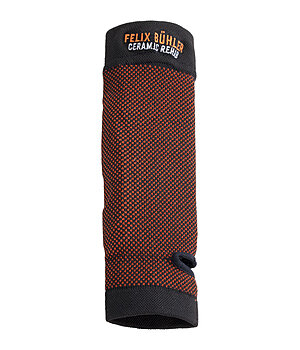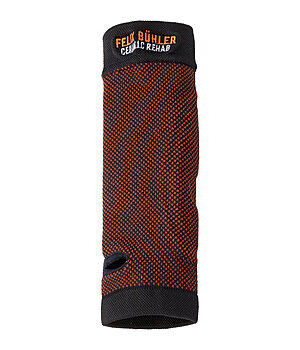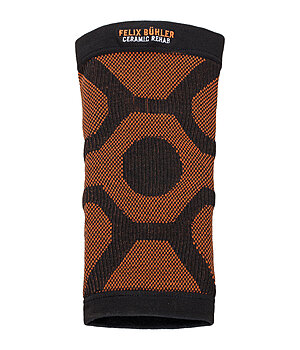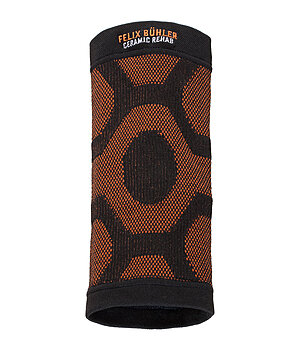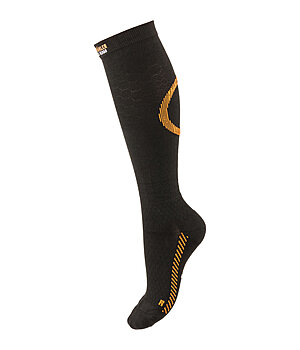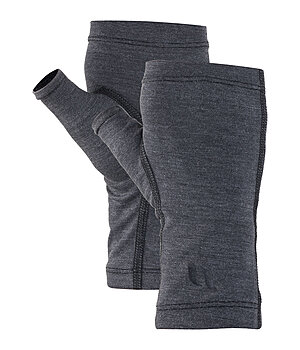Therapy measures and items for the rider
Riding is sport and therapy in equal measure. It has been scientifically proven that riding has a therapeutic effect on mental, spiritual and physical health. At the same time, sitting on a living creature is associated with risks and it is not uncommon for accidents and major and minor injuries to occur. However, if you take some safety precautions, horseback riding is a valuable therapeutic measure. At the same time, there are some preparatory aids or compensatory sports that we would like to introduce to you in this guide.

Horse riding – a dangerous sport?
Horse riding is one of the most common sports in which children and young people have accidents. Fortunately, only very few falls and accidents require medical treatment.
Clearly, the risks involved in equestrian sports should not be ignored. Nevertheless, the health benefits and opportunities far outweigh the risks. Sports physicians praise equestrian sport in high terms, because even children benefit from the movements of the horse. The three-dimensional movement patterns of the horse’s back, in which the rider is carried along, have positive effects on the rider’s movement and support apparatus. Especially the area around the lumbar spine and the pelvis is trained. Riding can thus counteract back pain and posture problems caused by weak muscles.

Active riding also supports circulation and heart function, which in turn promotes blood flow to internal organs and thus digestion.
You don’t necessarily have to sit on a horse to do something for your own health. Already the contact with the four-legged friend and the peaceful togetherness make a great contribution to mental health and positively influence the development of children.
To enjoy the full range of therapeutic benefits offered by the horse, you should take some safety precautions. These include being proactive to avoid a collision with a startled horse. For riding, riding hats are essential for your safety. Back protectors and body protectors offer protection for your torso. You can find out more about this topic in our guides on riding hats and body protectors.
What are the most common equestrian diseases?
Despite the health-promoting effects that the horse has on humans, overstraining and incorrect strain can occur, especially among frequent and professional riders. But leisure riders also suffer from muscle tension if the stressful daily routine is not left at the stable door and is instead taken into the saddle. In addition, not many riders practice a sport that compensates for riding, so that physical weaknesses are not made up for.
The most common equestrian illnesses caused by handling horses include:
- Crushing of the foot due to being stepped on by a horse with horse shoes
- Haematomas from the horse kicking out
- Burns to the hands if the horse breaks loose and the lead rope is pulled through the hands quickly
- Even bite wounds can result from careless handling of the horse
Frequent riders develop an bow-leg position in the knee area after many years of intensive riding, which ultimately leads to increased cartilage wear on the inside of the knee. Further ailments and complications in both professional and leisure riders can be:

- Broken bones due to falls (especially in the forearm area)
- Intervertebral disc disease: while sitting out at a trot, the spine is subjected to a great deal of stress. The intervertebral discs have to absorb a lot of shock.
- Muscular tension: Due to internal tension or a long day at the desk, the muscles tense up, especially in the upper back, shoulders and neck
- Muscle injury in the area of the adductors (inner thigh): Particularly show jumpers often suffer injuries to the inner thigh muscles a result of the landing after the jump
How can I support my health as a rider?
Rule number one should be to leave the stress of everyday life at the stable door and put it behind you. Time with your horse is precious, a relaxed atmosphere promotes the bond between you and your horse and makes riding more successful.
A compensatory sport that makes you feel better about your body is also very helpful. Ballet, Pilates or inline skates train your balance; jogging, swimming and cycling promote fitness. Not only should your horse be fit enough to carry you in the long run. Accommodate your horse by keeping yourself fit and not jumping into the saddle untrained.

Furthermore, there is a wide range of products that help you prepare yourself for riding in the optimum way. Especially products with deep-acting warmth are recommended for the rider. With the Ceramic Rehab range, Felix Bühler also supplies a wide range of innovative materials that promote blood circulation. The Felix Bühler Ceramic Rehab range is a good addition to comprehensive therapy measures in regeneration and the prevention of injuries and illnesses for riders, horses and dogs.
Wet and cold winters are the time for colds and strained muscles, which is a hindrance when riding. For a comfortable feeling while riding, riding leggings and breeches with Ceramic Fibre are a good choice.

With the Felix Bühler Full Seat Riding Leggings Ceramic Rehab you will be comfortably warm in winter, as your own body heat is reflected and you will therefore not cool down.
If long periods of sitting at a desk cannot be avoided, stretching exercises can be supplemented by neck covers and neck braces with ceramic particles. They loosen up and relax the muscles by increasing blood circulation.
As the rider walks, so he sits in the saddle. A suitable compensatory sport can train the posture-giving muscles to help to adopt an upright posture. Weak upper body muscles lead to slipped discs and other postural problems in the long run. In order to prevent permanent damage and to enable the horse to act correctly, the upper body muscles should be adequately trained.
Show Jumpers often have to deal with muscle-tendon injuries in the area of the adductors, i.e. the inner thigh muscle, due to the landing phase after the jump. The knee joints also have to withstand a lot, which is why they can also suffer from pain. Physio Knee Guards not only give the knee more stable support, but also improve blood circulation and relieve pain with fused ceramic particles. The fabric is breathable and stretchy, which is why the best comfort is guaranteed even while riding.



